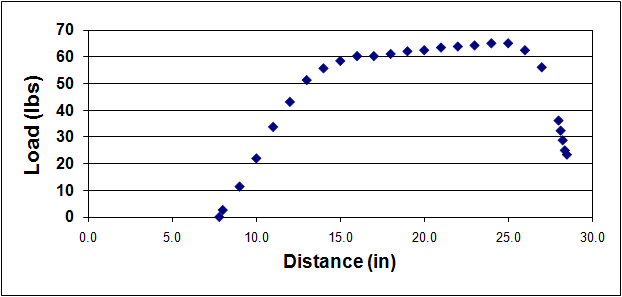Martin Warthog
Personal Commentary by Jon Silks about the Martin Warthog:
The warthog had its best showing in the balance/feel category as it tied for fifth place. A well-rounded grip, while maybe a little too full, helped the Warthog get to the top 5. Martin's rig also hit the 5th spot in the speed test behind the #4 bow by less than a half foot per second and only missing the #2 spot by nearly 2 fps! This is a fast bow. A significant shock in the handle with follow-on lasting vibration coupled with notable noise at the shot held the Warthog back overall.
|
 |
||||||||||||||
Using this Table: Kinetic Energy: (in foot-pounds)
This is the energy that actually goes into propelling the arrow. Basically it is the energy that is left over from the stored energy after all of the bow system friction is accounted for. |
|||||||||||||||
Using This Graph: The area under the graph signifies the amount of energy stored by the system from brace height to full draw (power stroke). The shape of the curve is generated by a plot of draw weight in pounds against draw length in inches and gives an indication of how the bow will feel when drawn. The more rounded the curve the more "smooth" the feel of the draw cycle, however, if the curve is "squared-off" it will likely feel more aggressive. The trade off comes in performance, as the more aggressive curve is generally indicitive of more stored energy and more speed.
|
|||||||||||||||










